International News
Xi Jinping expects to be in command till 2035
Certainly, some critique put him on a par with Deng Xiaoping or even Mao Zedong. Some years ago, Xi Jinping had made a classic statement – “One must build a good cage. If the cage is too loose, or is very good but the door is not closed, and one is free to go in and out, then that is of no use.”
Now, the Communists party in China moves on to a new central task — to achieve the “second centenary goal of building China into a great modern socialist country in all respects and to advance the rejuvenation of the Chinese nation on all fronts through a Chinese path to modernisation.
The mega Chinese goal is tied to the 100th anniversary of the founding of the People’s Republic of China — which would be 2049 — but Xi has pushed the date for “basically” realizing this goal forward to 2035.
Conveniently, that leaves the door open for Xi to still be in command of the party at the big celebration 13 years from now.
Marxists in once upon a time Red forte Tripura – used to often say the line from a play. The line of the play was of course penned obviously with a pro-Left liberal sentiment:
“Every war or struggle is for power; and power can never do good to anybody”.
The economic policy that Xi has put forward contains a similar sort of contradiction.
The central idea of the “dual circulation” policy is that China should increase its trade surplus with the wider world, while simultaneously becoming more dependent on its domestic economy to drive consumption.
Many economists think that this will be a hard balance to manage. But, in a sense, the strategy should not be seen as an exercise in economics but in politics. It mirrors precisely the idea of being highly connected to the world while closed to it physically.
But compared with real openness, it is one that would leave both sides poorer.
“China remains connected to the outside world largely through the virtual environment, in particular social media and video apps. Yet the vision of the world created within the country is very partial. State media pumps out images of the west still devastated by the virus,” says an article ‘The Guardian’.
China, Xi – And Peace in India’s North East
This is one of the most perilous periods in international history. There’s something big happening everywhere — China, Ukraine, Indo Pacific and of course Britain where Liz Truss had the shortest stint ever in history as Prime Minister.
On the last day of Communists Party Congress in China on Saturday, Oct 22, former President Hu Jintao, was ‘removed’ unceremoniously and by force by so-called ‘unnamed Chinese communist agents’.
Both China and the Chinese communists have many admirers in India and also in the northeast closer home as well.
To them New Delhi ‘could not be trusted’ but Xi Jinping’s polity should be applauded.
China is that country which has seen almost 30 years of 9 and 10 per cent of average growth even till fiscal 2016-17.
This was surely an unprecedented performance by any country at the global stage.
Importantly, during this period, around 50 per cent of global growth came from China and India was by default and otherwise part of the beneficiary list.
The drop in Chinese growth rate had impacted global trade and commerce too. In fact, the global trade shrunk as a result of the negative impact on China’s own growth graph.
At one time even India benefited and the country’s global trade was growing at an average of seven percent a year.
The politics of China and also the other global challenges make a lot of sense even in the neighbourhood.
It would impact now and it impacted regional politics even in the past.
In the context of northeast India, Mon and Tuensang were the battlefields of various ultra groups.
In the eighties, Indian security force reports used to suggest that communist China’s help and logistic support was crucial at least for one camp
Even the church lobby was unhappy.
One such internal security analysis had said that the league of western Christian countries led by the US and the United Kingdom were bemused while the Indian jawans reportedly watched from a distance what they called a snake-mongoose fight.
But enough water has flown in river Dhansiri near Dimapur since then. ‘Christ’ and his principles and values are now a public pledge. ‘Nagaland for Christ’ – as they put it.
However, it is altogether a different chapter that violence and threats pursue at different levels.
According to the annual report of the Ministry of Home Affairs, 2020, incidents of insurgency in six out of eight northeastern states declined by 80 per cent since 2014 and civilian deaths were down by 99 per cent.
The year 2020 also had recorded the lowest insurgency incidents and casualties among civilians and security forces in the last decades. This was the year of the Galwan valley conflict nevertheless.
But around September 2020, in a retort to Prime Minister Narendra Modi’s statement aimed at China that — the era of expansionism is over — the rebels also had issued a joint statement saying, as the entire world has made up its mind against expansionism, the people of West Southeast Asia are also countering the expansionism of India.
One must study these statements based on the availability of Chinese-made arms in the Northeast.
In 2020, when it was realised at the Government of India level that the Naga peace talks had been stalled, as expected the apprehension was Chinese hands.
On September 18, 2020, there was a clear setback to all efforts for reconciliation as the NSCN-IM issued a statement from its headquarters saying a separate Naga flag and constitution “must form a part of the Indo-Naga political solution”.
Given the contest, one source had said even during the UPA regime in 2011-12, Chinese agents including a woman posing as a TV journalist reportedly visited the headquarters of the NSCN-IM near Dimapur and held a three-hour-long meeting with top NSCN-IM leaders.
On September 28, 2022, NSCN-IM issued a statement alleging that the government of India has “hindered” the peace parleys.
It also said, “therefore there is an imperative need for third party intervention” in Naga talks.
Crime
D-Syndicate looking to expand narco trade into Southern and Northeastern routes, warn Intelligence agencies

New Delhi, Oct 30: In recent months, the Narcotics Control Bureau (NCB) has been cracking down heavily on the Dawood Ibrahim-linked drug network in India.
The arrests of Danish Chikna and Mohammed Salim Sheikh have dealt major blows to the Dawood network, and this has prompted the syndicate to look for newer avenues.
As Intelligence agencies continue to focus heavily on the networks in Maharashtra and neighbouring states, the D-Syndicate is looking to expand its networks in the northeastern and southern states of India.
Action would be taken similarly in these parts of the country. However, it is necessary to bust the networks in states such as Maharashtra and Gujarat, which have been the traditional playground of the syndicate for a long.
While Dawood Ibrahim has diversified his business in various parts of the country, the command centre remains in Maharashtra.
The people working for the network in this sector control the businesses across the country, and hence, breaking their backs first is important. This would eventually lead to the weakening of the networks in other parts of the country.
Operations in the northeastern and southern states are currently overseen by Haji Salim, an ISI stooge and a member of the Dawood network.
Salim has been playing a big part in the D-Syndicate after Dawood’s right-hand man, Chhota Shakeel, has gone mysteriously quiet.
With Dawood’s brother Anees Ibrahim put in charge of the International wing, which does business mostly in African nations, the onus of the Indian markets has largely fallen upon Salim.
According to Intelligence agencies, the ISI and syndicate have now instructed Salim to focus entirely on the southern and northeastern sector as they feel that there is a major potential.
The syndicate sees potential in the northeast owing to the existing routes from Myanmar. With Bangladesh opening up completely to the ISI, the syndicate sees further potential in this sector.
In the South, the syndicate’s network exists. However, this network has largely focused on smuggling drugs out of the country. The narcotics would first be smuggled into the southern states, especially Kerala and Tamil Nadu, and later, to the international markets such as Thailand through the Sri Lanka route.
An Intelligence Bureau official says that the syndicate is also looking to bring in more drugs through Sri Lanka before distributing it in the Indian market.
While the international market is huge for the syndicate, it is not ready to let go of India, as demand is huge.
The syndicate not just wants to cover its losses in Maharashtra, but also the ones it is incurring in Punjab.
Several attempts to bring in drugs through the Punjab route using both couriers and drones are failing owing to heavy scrutiny and security. Hence, the Dawood network wants to take maximum advantage of the southern route so that it can smuggle drugs in huge quantities and then distribute them to the Indian market.
To bring in drugs from the international market, the syndicate would use the route from Sri Lanka. The network would look to smuggle the consignment into Tamil Nadu and Kerala before supplying it into the Indian market.
According to officials, the network feels that this would be an easier route, as most of the consignments in the Indian market will be transported via land route.
The scrutiny at the southern international borders is relatively less when compared to the borders along Punjab or Jammu and Kashmir. Further, using the land route to smuggle drugs into India would also attract less scrutiny, and the syndicate hopes there would be more hits than misses.
Another official also pointed out that the D-Syndicate is also tapping into the illegal immigrants who have settled in South India in huge numbers. They could be used as carriers to supply the drugs into the Indian markets, officials also warned.
Business
US lawmakers unite to defend bilateral ties with India through letters and resolutions
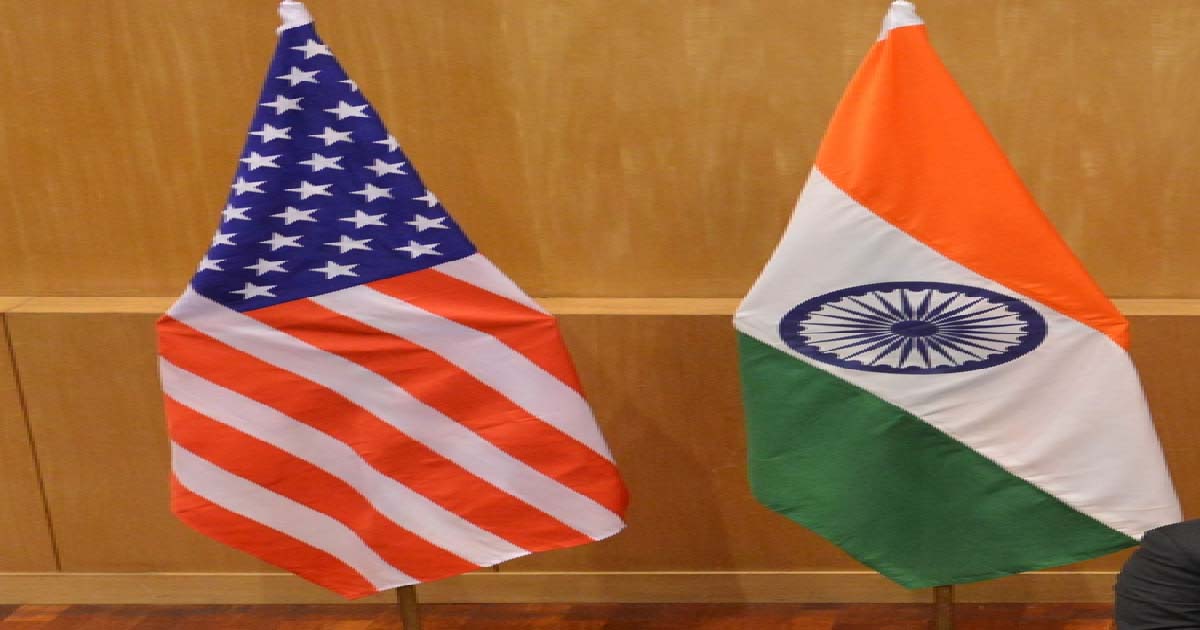
Washington, Oct 28: Both Republican and Democratic lawmakers have joined hands to support the India-US relationship, months after the Trump administration announced a series of policies targeting Indian interests.
At least six bipartisan letters and resolutions have been drafted over the past 10 days defending the interests of the Indian American community, reaffirming support for the India–US partnership, and pressing the administration for accountability over its recent actions targeting New Delhi.
Last week, a group of House members expressed concern that an event at Rutgers University on Monday could “fuel further prejudice” against Hindus at a time when Hindu temples have been targets of violence.
The co-signers of the letter were Democrats Sanford Bishop from Georgia, Shri Thanedar from Illinois, and Suhas Subramanyam from Virginia, and Republican Rich McCormick, also from Georgia.
Two days earlier, another bipartisan group of six House Representatives wrote to US President Donald Trump and Commerce Secretary Howard Lutnick, expressing concerns over the H-1B proclamation.
“We are concerned that the recent proclamation related to H-1B visa petitions will create significant challenges for US employers and overall weaken our competitiveness,” the letter stated.
The group again included Democrat Suhas Subramanyam along with Republican Congressmen Jay Obernolte and Don Bacon, among others.
On October 17, four US lawmakers wrote to President Donald Trump, urging him to attend the Quad Leaders’ Summit in India and other meetings in Asia.
The same day, a bipartisan resolution was introduced in the House of Representatives to recognise the “contributions made to the United States by the Indian American diaspora” and condemn recent acts of racism against Indian Americans.
The resolution also termed the India-US relationship as “one of the most important democratic partnerships in the world”.
It was a sharp departure from just days earlier, when 19 House members, all Democrats with no Republican support, wrote to President Donald Trump on October 8, urging him to “reset and repair” the India-US “critical partnership”.
Leaders from both Democratic and Republican parties have faced criticism for mostly remaining silent as senior officials of the Trump administration, like Trade Advisor Peter Navarro and Commerce Secretary Howard Lutnick, repeatedly targeted India over its purchase of Russian oil and trade imbalance.
In August, the Trump administration imposed 50 per cent tariffs on New Delhi, which included a 25 per cent levy for importing Russian oil.
Then, in September, President Donald Trump signed a proclamation on H-1B visas, imposing a $100,000 application fee to restrict the programme. Over 70 per cent of the approved H-1B applications in 2024 went to Indian nationals.
While a handful of Democrats opposed the administration’s stance publicly, Republican lawmakers, until recently, decided to keep quiet.
In early October, Democratic Representative Ami Bera, a leading advocate of the US-India relationship, told Media that some Republican lawmakers have remained silent out of fear of the president.
“I think they’re certainly afraid to take on President Trump directly,” he said.
In recent weeks, ties have stabilised, and negotiators have resumed talks to finalise the first phase of a trade agreement.
Last week, President Donald Trump held a special Diwali event at the White House where he termed Prime Minister Narendra Modi “a great person” and said he loves “the people of India.”
Bera added that more members should come out to support the relationship.
“Instead of making this about President Trump, let’s make it about the US-India relationship. Let’s make it about what we think as members of Congress – Democrats and Republicans. I don’t want the India-US relationship to be a Democratic thing or a Republican thing. It should be an American thing,” he told Media.
Business
US has reached a ‘substantial framework’ with China to avert tariffs: US Treasury Secretary Bessent
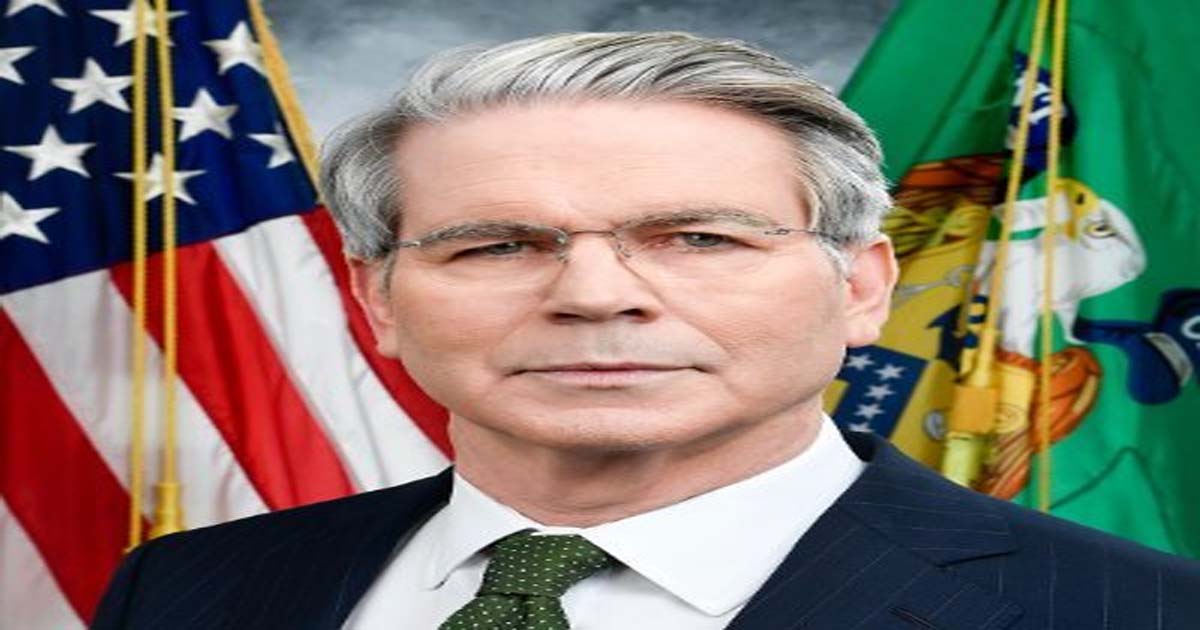
Washinton, Oct 27: US Treasury Secretary Scott Bessent has said that he believes the US has reached a framework agreement with China to avoid imposing an additional 100 per cent tariff on Chinese imports.
“I think we’ve reached a substantial framework for the two leaders who will meet next Thursday… that tariffs will be averted,” Bessent said on Sunday to media from Kuala Lumpur, Malaysia, where President Donald Trump arrived on Saturday for a weeklong Asia diplomacy tour.
Trump is expected to meet with Chinese leader Xi Jinping in South Korea later this week.
Earlier, Chinese International Trade Representative Li Chenggang said the US and China had reached “preliminary consensus” on trade issues during discussions in Malaysia, according to Chinese media.
Bessent did not provide details about the framework but said on media that he anticipates the US would get “some kind of deferral” on rare-earth export controls.
The minerals have been central to trade tensions between the top global economies.
Bessent said the framework sets up Trump and Xi “to have a very productive meeting,” adding, “I think it will be fantastic for US citizens, for US farmers, and for our country in general.”
Bessent indicated that an escalation in tariffs on China is “effectively off the table” following what he described as “very good” trade talks with his Chinese counterparts.
President Trump had threatened an additional 100 per cent tariff on China from November 1 over Beijing’s efforts to impose export controls on critical rare earths, ratcheting up tensions between the US and China.
Asked about the status of those tariffs, Bessent told media on Sunday that tariff threat has “gone away” after two days of talks in Malaysia.
“We had a very good two-day meeting. I would believe that the – so it would be an extra 100 per cent from where we are now, and I believe that that is effectively off the table.”
He added, “I would expect that the threat of the 100 per cent has gone away, as has the threat of the immediate imposition of the Chinese initiating a worldwide export control regime.”
US and Chinese trade negotiators reached a “basic consensus” on how to address their “respective concerns,” Chinese state media said on Sunday, following talks between the two sides over the weekend in Kuala Lumpur.
A delegation led by Chinese Vice Premier He Lifeng met with US officials including Treasury Secretary Scott Bessent and Trade Representative Jameson Greer for the talks, which come days ahead of a highly anticipated meeting between Chinese leader Xi Jinping and US President Donald Trump.
The two leaders are expected to meet on the sidelines of the APEC summit in South Korea, though Beijing, unlike Washington, has yet to confirm the meeting.
Earlier on Sunday, Bessent said the two sides had “set the stage for the leaders’ meeting” with a “very successful framework for the leaders to discuss”.
“The two sides engaged in candid, in-depth, and constructive exchanges and consultations on major economic and trade issues of mutual concern,” the Chinese state media readout said.
It listed out those issues as including US penalties on China’s maritime logistics and shipbuilding industry, reciprocal tariffs, fentanyl tariffs, agricultural trade, and export controls – a sweeping set of frictions that have set the world’s two largest economies at loggerheads.
“Two sides reached a basic consensus on arrangements to address each other’s concerns. Both sides agreed to further finalise the specific details and fulfil their respective domestic approval processes,” the readout said.
Trade and tech tensions between the world’s two biggest economies have heightened in recent weeks after the US expanded its export blacklist, hitting China’s access to American high-tech, while China ramped up its own export controls on rare earth minerals.
-

 Crime3 years ago
Crime3 years agoClass 10 student jumps to death in Jaipur
-

 Maharashtra1 year ago
Maharashtra1 year agoMumbai Local Train Update: Central Railway’s New Timetable Comes Into Effect; Check Full List Of Revised Timings & Stations
-
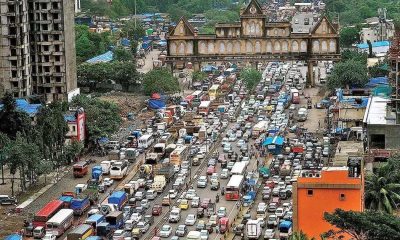
 Maharashtra1 year ago
Maharashtra1 year agoMumbai To Go Toll-Free Tonight! Maharashtra Govt Announces Complete Toll Waiver For Light Motor Vehicles At All 5 Entry Points Of City
-

 Maharashtra1 year ago
Maharashtra1 year agoFalse photo of Imtiaz Jaleel’s rally, exposing the fooling conspiracy
-

 National News1 year ago
National News1 year agoMinistry of Railways rolls out Special Drive 4.0 with focus on digitisation, cleanliness, inclusiveness and grievance redressal
-
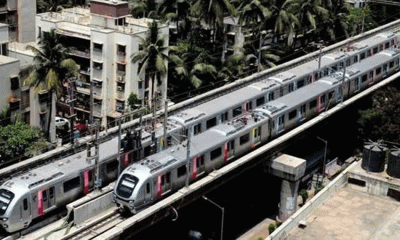
 Maharashtra12 months ago
Maharashtra12 months agoMaharashtra Elections 2024: Mumbai Metro & BEST Services Extended Till Midnight On Voting Day
-
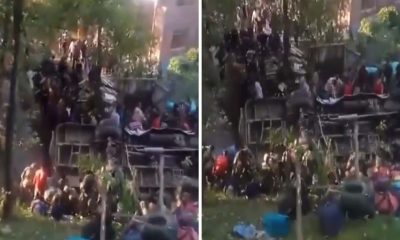
 National News1 year ago
National News1 year agoJ&K: 4 Jawans Killed, 28 Injured After Bus Carrying BSF Personnel For Poll Duty Falls Into Gorge In Budgam; Terrifying Visuals Surface
-

 Crime1 year ago
Crime1 year agoBaba Siddique Murder: Mumbai Police Unable To Get Lawrence Bishnoi Custody Due To Home Ministry Order, Says Report












